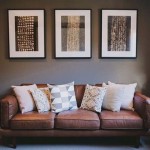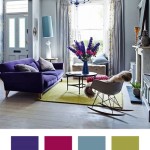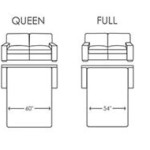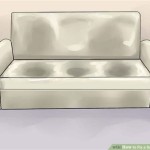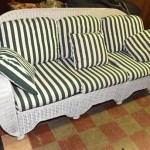What Colour Cushions Go With a Dark Grey Sofa Couch
A dark grey sofa is a versatile and popular choice for modern living spaces. Its neutral hue provides a sophisticated backdrop that can be adapted to various interior design styles. The success of any living room design, however, often hinges on the careful selection of accent pieces, and cushions play a pivotal role in adding personality, comfort, and visual interest to the sofa. Choosing the right cushion colours can elevate the entire room's aesthetic, while a mismatched selection can detract from the desired ambiance. Therefore, understanding the principles of colour theory and how different colours interact with dark grey is crucial for achieving a harmonious and stylish living space.
The choice of cushion colour should be guided by several factors. The overall colour scheme of the room, the desired mood, and the existing décor all contribute to the decision-making process. Dark grey, acting as a neutral base, allows for a wide range of colour palettes, from vibrant and bold to subtle and understated. Ultimately, the goal is to create a balanced and visually appealing space that reflects the individual's taste and style.
Understanding the Neutrality of Dark Grey
Dark grey is considered a neutral colour, meaning it lacks strong chromatic qualities and can easily blend with or complement other colours. This neutrality offers considerable flexibility in design. Unlike bolder, more saturated colours, dark grey doesn't compete for attention. Instead, it recedes into the background, providing a grounding element for brighter or more elaborate accents. This makes it an ideal choice for a sofa, as it allows for easy experimentation with different cushion colours and patterns without overwhelming the space.
The specific shade of dark grey can also influence the choice of cushion colours. A cool-toned dark grey, for example, might pair better with blues, greens, and purples, while a warm-toned dark grey could be complemented by oranges, reds, and yellows. Identifying the undertones in the grey will help in selecting cushion colours that resonate harmoniously.
Furthermore, the texture of the sofa fabric should be considered. A velvet or plush dark grey sofa will have a different visual impact than a linen or cotton one. The texture will affect how light reflects off the sofa, influencing how the cushion colours are perceived. Generally, textured fabrics can handle more complex patterns and bolder colours, while smoother fabrics might benefit from simpler designs and more muted tones.
Exploring Complementary Colour Palettes
One effective approach to selecting cushion colours is to use a complementary colour palette. Complementary colours are those that sit opposite each other on the colour wheel, such as blue and orange, red and green, or yellow and purple. When used together, complementary colours create a strong contrast and can add excitement and visual interest to a room. For a dark grey sofa, consider the following complementary colour combinations:
Yellow: Yellow cushions can inject warmth and energy into a space and provide a striking contrast against the coolness of dark grey. Opt for mustard yellow for a more sophisticated and muted look, or bright yellow for a playful and vibrant feel. Consider introducing patterned cushions that incorporate both yellow and grey to tie the colour scheme together.
Orange: Similar to yellow, orange adds warmth and vibrancy. Burnt orange or terracotta shades can bring an earthy and rustic feel to the living room, while brighter oranges create a more contemporary and energetic atmosphere. Pairing orange cushions with other neutral tones, such as cream or beige, can balance the intensity of the orange and create a more cohesive look.
Purple: Purple offers a more sophisticated and luxurious contrast to dark grey. Deep shades of purple, such as eggplant or plum, can add a touch of drama and elegance, while lighter shades of lavender or lilac create a more calming and serene atmosphere. Consider incorporating purple cushions with velvet or silk textures to enhance the sense of luxury.
When using complementary colours, it's important to maintain a balance. Avoid using equal amounts of both colours, as this can create a visually jarring effect. Instead, use dark grey as the dominant colour and introduce the complementary colour as an accent through cushions and other decorative elements.
Exploring Analogous Colour Palettes
Another approach is to use an analogous colour palette. Analogous colours are those that sit next to each other on the colour wheel, such as blue, blue-green, and green, or red, red-orange, and orange. Analogous colour schemes create a harmonious and cohesive look, as the colours share similar undertones and blend seamlessly together. For a dark grey sofa, consider the following analogous colour combinations:
Blues and Greens: This combination evokes a sense of tranquility and nature. Different shades of blue, from navy to turquoise, can be paired with various greens, from emerald to olive, to create a calming and refreshing atmosphere. Consider using cushions with botanical prints or textures to further enhance the natural feel.
Greys and Whites: For a minimalist and sophisticated look, stick to different shades of grey and white. Layering various grey tones, from light silver to charcoal, can create depth and dimension. White cushions can add brightness and contrast, while textured fabrics like linen or wool can add warmth and visual interest.
Pinks and Purples: This combination creates a soft and romantic atmosphere. Pale pink cushions can add a touch of femininity and warmth to the space, while deeper shades of purple provide a touch of sophistication and elegance. Consider incorporating floral patterns or delicate embroidery to further enhance the romantic feel.
When using analogous colours, it's important to vary the shades and textures to prevent the space from feeling monotonous. Introduce contrasting elements through accessories and artwork to add visual interest and prevent the room from feeling too uniform.
Considering Monochromatic Colour Schemes
A monochromatic colour scheme involves using different shades and tints of a single colour. This approach creates a sophisticated and cohesive look that is both calming and visually appealing. For a dark grey sofa, a monochromatic scheme could involve using various shades of grey, from light silver to charcoal, along with black and white accents. This approach offers a clean and modern aesthetic that is easy to implement.
To avoid monotony, it is crucial to introduce different textures and patterns within the monochromatic scheme. Consider using cushions with varying fabrics, such as velvet, linen, or faux fur, to add visual interest. Geometric patterns, subtle stripes, or textured weaves can also enhance the overall design without disrupting the monochromatic feel.
Adding metallic accents, such as silver or gold, can further elevate the monochromatic colour scheme. Metallic cushions or accessories can reflect light and add a touch of glamour to the space. However, moderation is key, as too much metallic can overwhelm the room and detract from the overall minimalist aesthetic.
The Impact of Patterns and Textures
While colour is a primary consideration, the patterns and textures of the cushions also play a significant role in the overall aesthetic. Patterns can add visual interest and personality to the space, while textures can enhance the tactile experience and add depth to the design. When choosing cushions for a dark grey sofa, consider the following:
Geometric Patterns: Geometric patterns, such as stripes, chevrons, or hexagons, can add a modern and graphic element to the living room. These patterns work well in contemporary or minimalist spaces and can be used to create a sense of order and structure. Consider using geometric patterns in contrasting colours, such as black and white or grey and yellow, to create a bolder statement.
Floral Patterns: Floral patterns can add a touch of femininity and romance to the space. Large-scale floral prints can create a dramatic and eye-catching effect, while smaller-scale floral prints offer a more subtle and delicate look. Consider using floral patterns in soft and muted colours, such as pinks, purples, or greens, to complement the dark grey sofa.
Abstract Patterns: Abstract patterns can add a sense of artistry and creativity to the living room. These patterns can range from simple brushstrokes to complex geometric designs and can be used to express individual style and personality. Consider using abstract patterns in bold and vibrant colours to create a focal point in the space.
Textured Fabrics: Textured fabrics, such as velvet, linen, or faux fur, can add depth and dimension to the design. Velvet cushions can add a touch of luxury and sophistication, while linen cushions offer a more relaxed and casual feel. Faux fur cushions can add warmth and coziness to the space. Experimenting with different textures can create a tactile experience that enhances the overall comfort and appeal of the living room.
Factors Beyond Colour: Size, Shape and Arrangement
Beyond colour, the size, shape, and arrangement of cushions contribute to the overall harmony of the seating area. Varying sizes and shapes of cushions introduces dynamic visual interest, preventing a static or overly uniform appearance.
Large cushions, typically square or rectangular, offer substantial comfort and support, making them ideal for leaning against. Smaller cushions, often round or bolster-shaped, serve as decorative accents that add layers of texture and pattern. Combining different sizes creates a visually appealing and comfortable seating arrangement.
The arrangement of cushions is equally important. Avoid symmetrical arrangements, which can appear stiff and formal. Instead, opt for an asymmetrical arrangement, placing cushions in an intentionally random yet balanced manner. Overlapping cushions slightly can create a relaxed and inviting atmosphere.
Consider the number of cushions used. Too few cushions can make the sofa appear bare, while too many can clutter the space. A general rule of thumb is to use an odd number of cushions, such as three or five, to create a visually balanced and pleasing arrangement. The size of the sofa should also be considered when determining the appropriate number of cushions.
The overall goal is to create a welcoming and comfortable seating area that is both aesthetically pleasing and functional. By carefully considering the size, shape, and arrangement of cushions, it is possible to transform a dark grey sofa into a stylish and inviting focal point of the living room.

What Colour Cushions Go With A Grey Sofa Heal S Blog

5 Pillow Combinations For A Dark Grey Couch Everand

4 Ways To Decorate Around Your Charcoal Sofa Maria Killam

4 Ways To Decorate Around Your Charcoal Sofa Maria Killam

What Colour Cushions Go With A Dark Grey Sofa
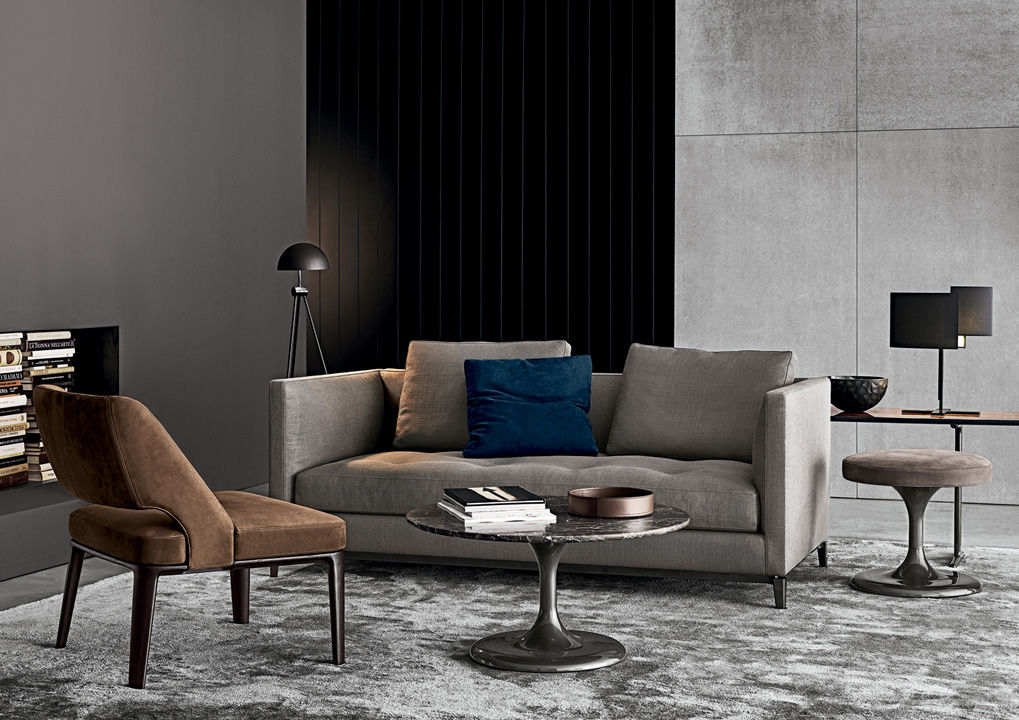
3 Cushion Curtain Colours To Pair With Grey Sofa Minotti London

14 Ways To Style A Grey Sofa In Your Home Smart Furniture Decor

How Not To Decorate Around A Dark Neutral Sofa Advice For Homeowners

Living Room Throw Pillows For Grey Couch Light Sofa Decorating Ideas Color Schemes Dark Colors That Go With Charcoal Gray Sensational

3 Cushion Curtain Colours To Pair With Grey Sofa Minotti London


